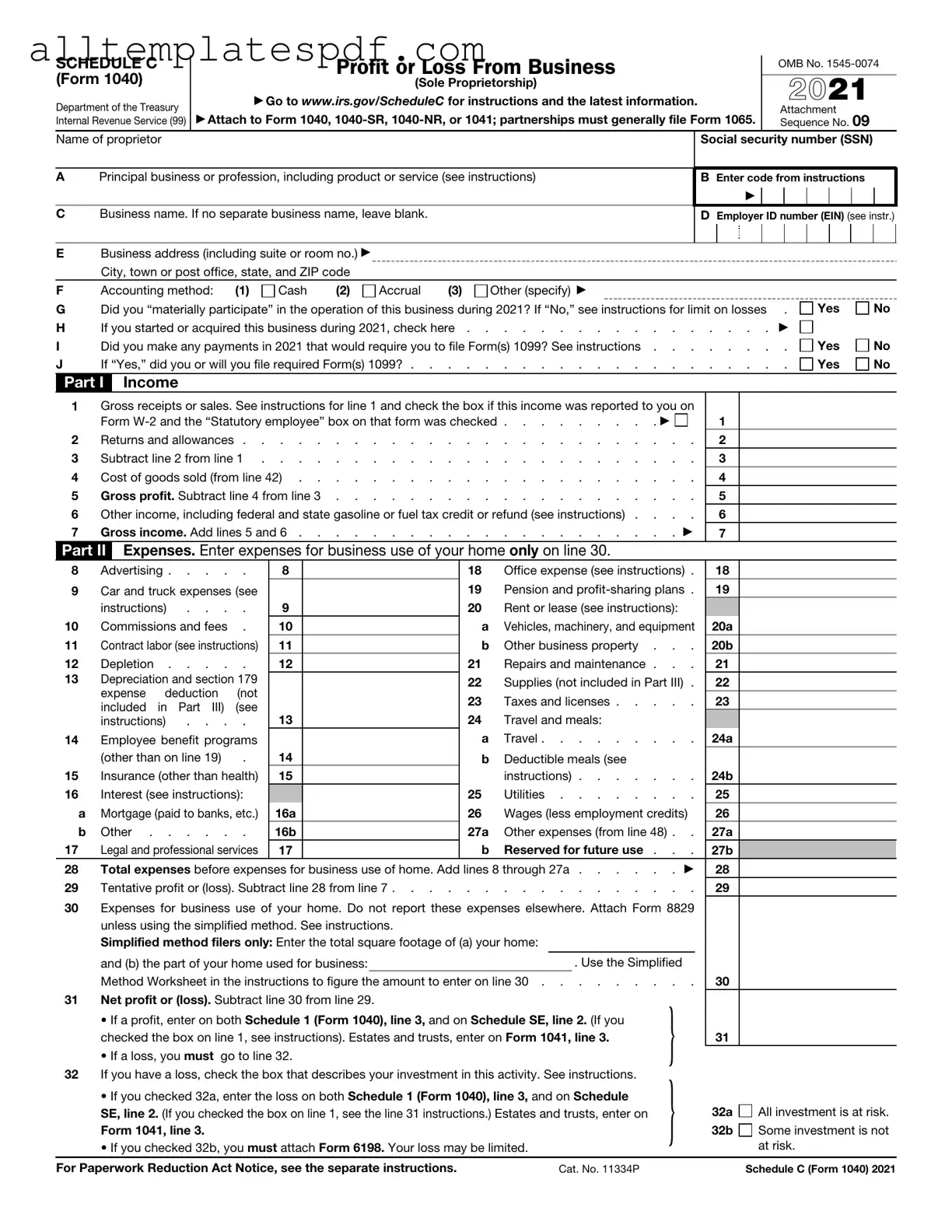Filling out the IRS Schedule C (Form 1040) can be a complex task, and many individuals make common mistakes that can lead to complications. One frequent error is failing to report all income. It is essential to include every source of income related to the business. Even small amounts can add up and must be reported to avoid discrepancies with the IRS.
Another mistake is misclassifying expenses. Properly categorizing expenses is crucial for accurate reporting. Many individuals may mistakenly classify personal expenses as business expenses, which can lead to issues during an audit. Keeping detailed records and receipts can help ensure that expenses are categorized correctly.
Omitting necessary deductions is also a common error. Many individuals overlook valuable deductions that could reduce their taxable income. For example, home office deductions, vehicle expenses, and business-related travel costs can significantly impact tax liability. It is important to familiarize oneself with eligible deductions to maximize tax benefits.
Inaccurate calculations can lead to significant problems. Simple math errors can result in underreporting or overreporting income and expenses. Double-checking all calculations before submitting the form is advisable to ensure accuracy and compliance.
Another mistake is not signing and dating the form. A Schedule C that is not signed or dated may be considered incomplete by the IRS. This can delay processing and lead to further complications. Always ensure that the form is signed and dated before submission.
Failure to keep adequate records is a critical oversight. The IRS requires that taxpayers maintain records to support the information reported on Schedule C. This includes receipts, invoices, and bank statements. Inadequate record-keeping can make it difficult to substantiate claims during an audit.
Individuals sometimes forget to report changes in business status. If there are changes such as a shift from a sole proprietorship to a partnership, this should be reflected on the Schedule C. Not reporting changes can lead to confusion and potential penalties.
Lastly, neglecting to review the instructions can lead to misunderstandings. The IRS provides detailed instructions for completing Schedule C. Taking the time to read and understand these instructions can help prevent many common mistakes and ensure a smoother filing process.
